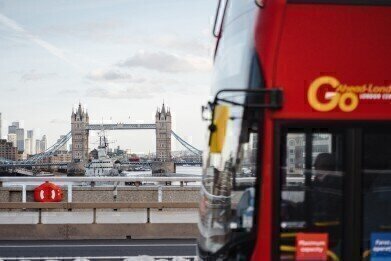Air Monitoring
Public Transport – the Answer to Environmental Pollution?
Nov 30 2015
Back in 1956, the UK passed the Clean Air Act, a reaction to the devastating effects of the Great Smog of London which claimed the lives of around 4,000 residents of the capital. Almost 60 years on, achieving clean air free from pollution remains a political priority – especially in London itself.
Even though the city offers a world class subway network and fast, frequent and reliable bus services, a 2011 report from the Institute for Transportation and Development Policy found that Londoners generally only use public transportation a quarter of the time. This means that 75% of the time they are turning to private passenger cars, amounting to more vehicles on the road, more petrol being used and more harmful pollutants being spat out into the atmosphere.
Increased Emissions
The Environmental Protection Agency (EPA) in the United States recently found that passenger cars are responsible for an alarming amount of emissions. The figures on an annual basis are as follows:
- 5,194 kg of carbon dioxide (CO2)
- 261 kg of carbon monoxide
- 35 kg of hydrocarbons
- 17kg of nitrogen oxides (NOX)
Obviously, public transport vehicles are responsible for emitting equal or greater quantities of these pollutants on an individual basis – but there are far less of them required to ferry people around. Furthermore, the introduction of environmentally-friendly fleets of buses has an exponentially larger impact of emissions than private users. As such, it’s a no-brainer to make the switch from private car to public bus whenever possible.
Reduced Fuel Consumption
The average private vehicles also consumes well over 2,000 litres of petrol on an annual basis in the States, as well. Undeniably, distances are greater and car use is more common across the pond, but with Londoners using their own vehicles three quarters of the time for journeys (the vast majority of which could definitely be achieved via public transport), private fuel consumption is still very high.
This means that more fossil fuels have to be mined and combusted, thus increasing carbon emissions, raising the global temperature and exacerbating climate change. If more of us took the bus or train, fuel consumption rates would be significantly slashed.
Other Innovative Forms of Public Transport
While rail, buses and trams may represent the lion’s share of public transport, there are other alternatives as well. The success of the “Boris’ Bikes” scheme in the capital to facilitate the rental of bicycles as and when users need them has inspired similar incentives around the country.
Meanwhile, the rise of e-cars, which can be easily rented without annoying paperwork or the necessity to return them to a depot, means that people now have access to a vehicle in the uncommon circumstance where it is absolutely necessary. This encourages them not to own a car outright, which in turn increases the likelihood that they will use public transport more frequently.
As a result, improving air quality and reducing transport-related pollution must surely centre on improved public transport links. And with statistics from a 2004 study, showing that a strike of public transport in Milan, Italy increased harmful pollutants in the air threefold, surely encouraging increased public transit use is the way to go for reducing pollution and saving the environment.
Digital Edition
IET 34.2 March 2024
April 2024
Gas Detection - Biogas batch fermentation system for laboratory use with automatic gas analysis in real time Water/Wastewater - Upcycling sensors for sustainable nature management - Prist...
View all digital editions
Events
Apr 30 2024 Melbourne, Australia
Apr 30 2024 Birmingham, UK
May 03 2024 Seoul, South Korea
May 05 2024 Seville, Spain
May 06 2024 Minneapolis, MN, USA


















